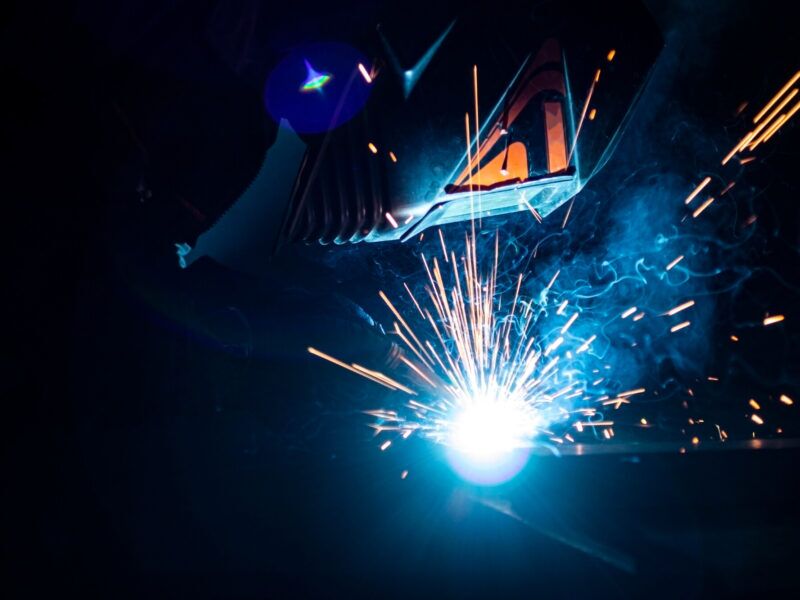Efficient Ways to Prevent Weld Undercut in Your Welding Jobs
Efficient Ways to Prevent Weld Undercut in Your Welding Jobs
Blog Article
Understanding the Art of Welding: Just How to Avoid Undercut Welding Issues for Flawless Fabrication Outcomes
By comprehending the root triggers of undercut welding and carrying out efficient techniques to avoid it, welders can raise their craft to new degrees of quality. In the pursuit of flawless fabrication outcomes, understanding the art of welding to prevent undercut issues is not just a skill yet a requirement for those striving for perfection in their job.
Comprehending Undercut Welding

To prevent undercut welding, welders need to make sure proper welding criteria, such as adjusting the existing, voltage, traveling speed, and preserving the correct electrode angle. In addition, utilizing the suitable welding strategy for the particular joint arrangement is important. Utilizing weaving motions or backstepping methods can aid guarantee correct weld metal deposition and lower the possibility of undercut development. Regular evaluation of welds during and after the welding process is additionally critical to catch any type of undercut early and make necessary modifications to avoid further problems. Preventing weld undercut. By understanding the reasons for undercut welding and implementing preventive procedures, welders can attain premium, structurally sound welds.
Reasons For Undercut in Welding
Recognizing the aspects that add to damage in welding is essential for welders to produce top quality, structurally sound welds. When the weld metal does not correctly fill up the groove formed between the base steel and the previously transferred weld steel, undercutting occurs. Several factors can lead to damage in welding. One typical cause is excessive heat input. Welding at heats for extended durations can lead to the base metal thawing greater than preferred, resulting in damage. Insufficient welding existing or inaccurate welding speed can also add to damage. Insufficient current might not supply enough warmth to thaw the base and filler metals sufficiently, while excessive rate can prevent proper combination, causing undercut. Additionally, improper electrode angles or wrong torch manipulation methods can create locations of low weld steel deposition, advertising undercut. Comprehending these reasons and implementing correct welding techniques can assist prevent undercutting issues, guaranteeing long lasting and solid welds.
Techniques to stop Undercutting

To alleviate the threat of damaging in welding, welders can use critical welding methods aimed at improving the high quality and stability of the weld joints. One effective approach is to readjust the welding criteria, such as voltage, existing, and take a trip speed, to ensure proper heat input and deposition. Maintaining a suitable electrode angle and ensuring constant travel speed can also help prevent undercut. Additionally, making use of the proper welding strategy for the certain joint setup, such as weave or stringer beads, can add to decreasing undercutting. Preventing weld undercut.
Moreover, correct joint prep work, including making certain clean base products devoid of impurities and utilizing the appropriate welding consumables, is crucial in protecting against undercut defects. Using back-step welding methods and regulating the weld bead account can likewise help disperse heat uniformly and minimize the risk of undercut. Routine assessment of the weld joint during and after welding, along with executing quality control steps, can assist in finding and addressing damaging issues immediately. By applying these strategies carefully, welders can attain flawless construction results with marginal undercut flaws.
Significance of Appropriate Welding Specifications
Selecting and maintaining suitable welding parameters is vital for accomplishing redirected here effective welds with marginal defects. Welding criteria refer to variables such as voltage, existing, take a trip rate, electrode angle, and securing gas circulation rate that directly impact the welding procedure. These specifications need to be very carefully changed based on the kind of material being welded, its thickness, and the welding technique employed.
Appropriate welding specifications guarantee the correct amount of warmth is related to thaw the base metals and filler product consistently. If the specifications are established expensive, it can result in excessive warmth input, triggering spatter, burn-through, or distortion. On the various other hand, if the specifications are also reduced, incomplete fusion, absence of penetration, or damaging may occur.
High Quality Guarantee in Welding Operations

Final Thought
In final thought, grasping the art of welding calls for a comprehensive understanding of undercut welding, its causes, and techniques to prevent it. By ensuring appropriate welding criteria and applying top quality guarantee methods, flawless construction results can be achieved. It is essential for welders to consistently pursue quality in their welding procedures to prevent undercut issues and generate high-grade welds.
Undercut welding, a typical problem in welding processes, occurs when the weld steel doesn't properly load the groove and leaves a groove or anxiety along the welded joint.To avoid undercut welding, welders need to make sure proper welding criteria, such as changing the existing, voltage, traveling speed, and keeping the proper useful site electrode angle. Inadequate my response welding incorrect or existing welding speed can additionally contribute to damage.To reduce the threat of undercutting in welding, welders can utilize strategic welding techniques aimed at boosting the quality and honesty of the weld joints.In conclusion, grasping the art of welding needs a complete understanding of undercut welding, its reasons, and techniques to avoid it.
Report this page